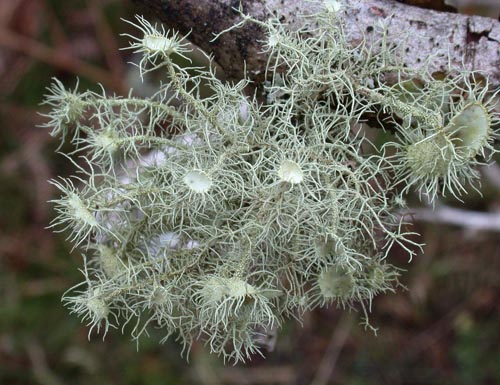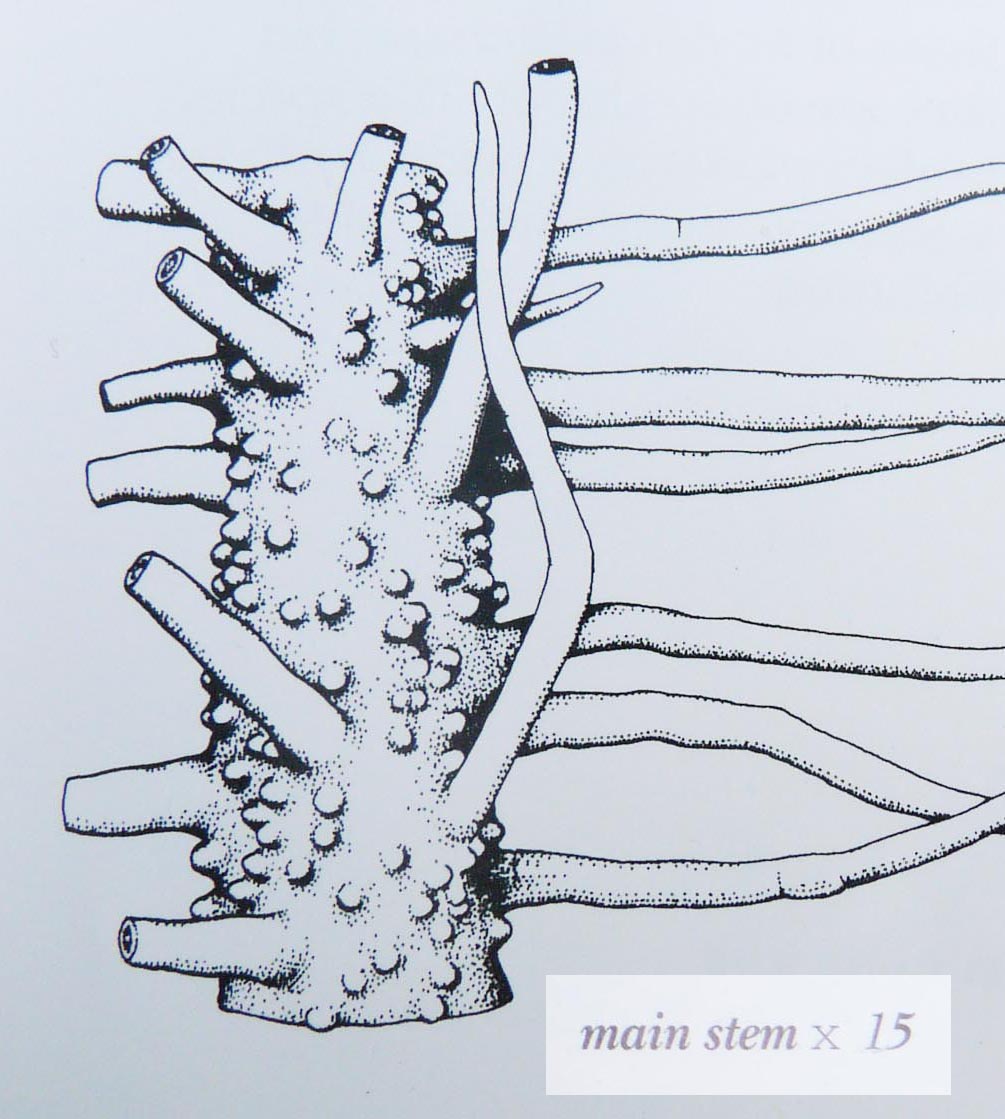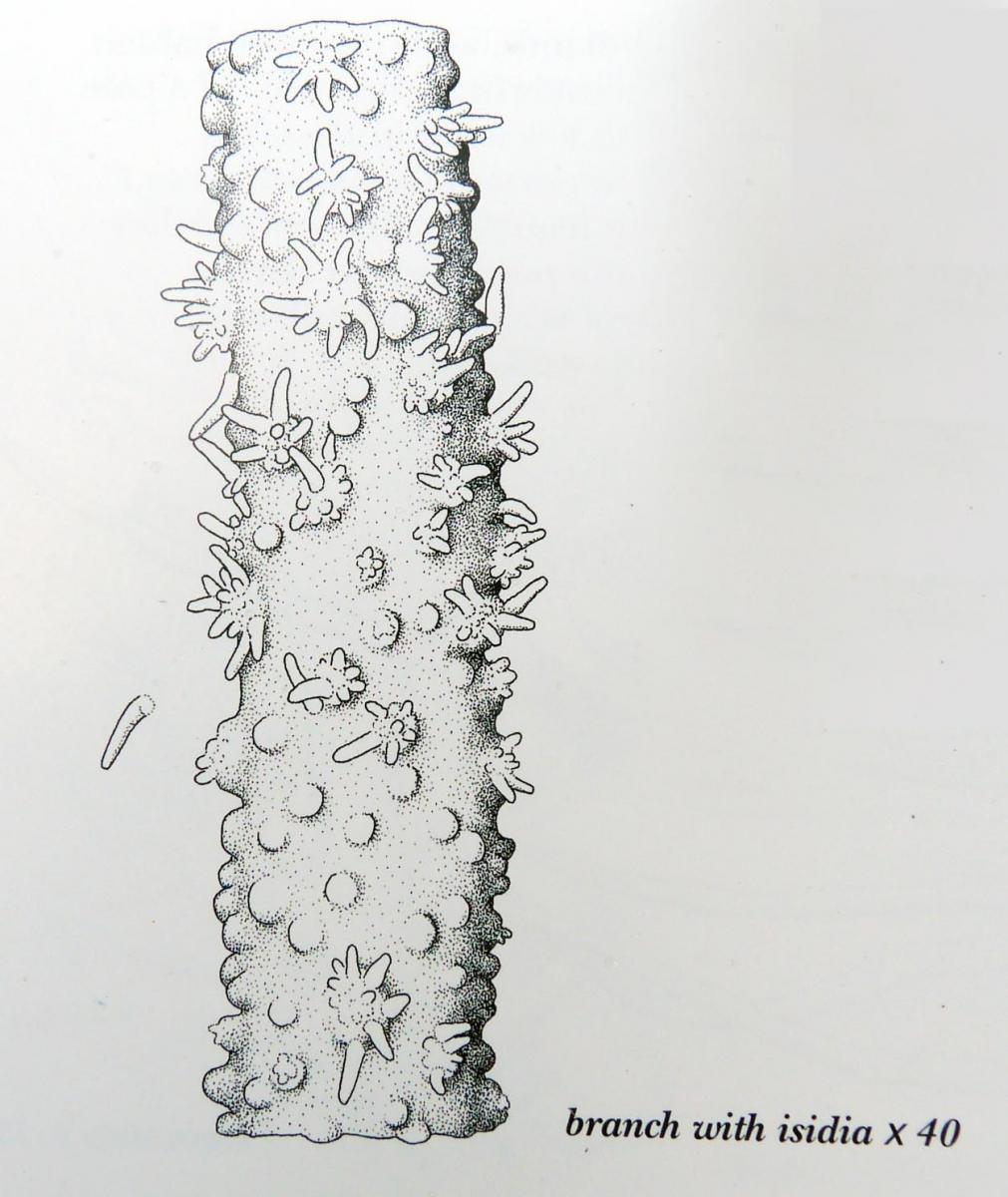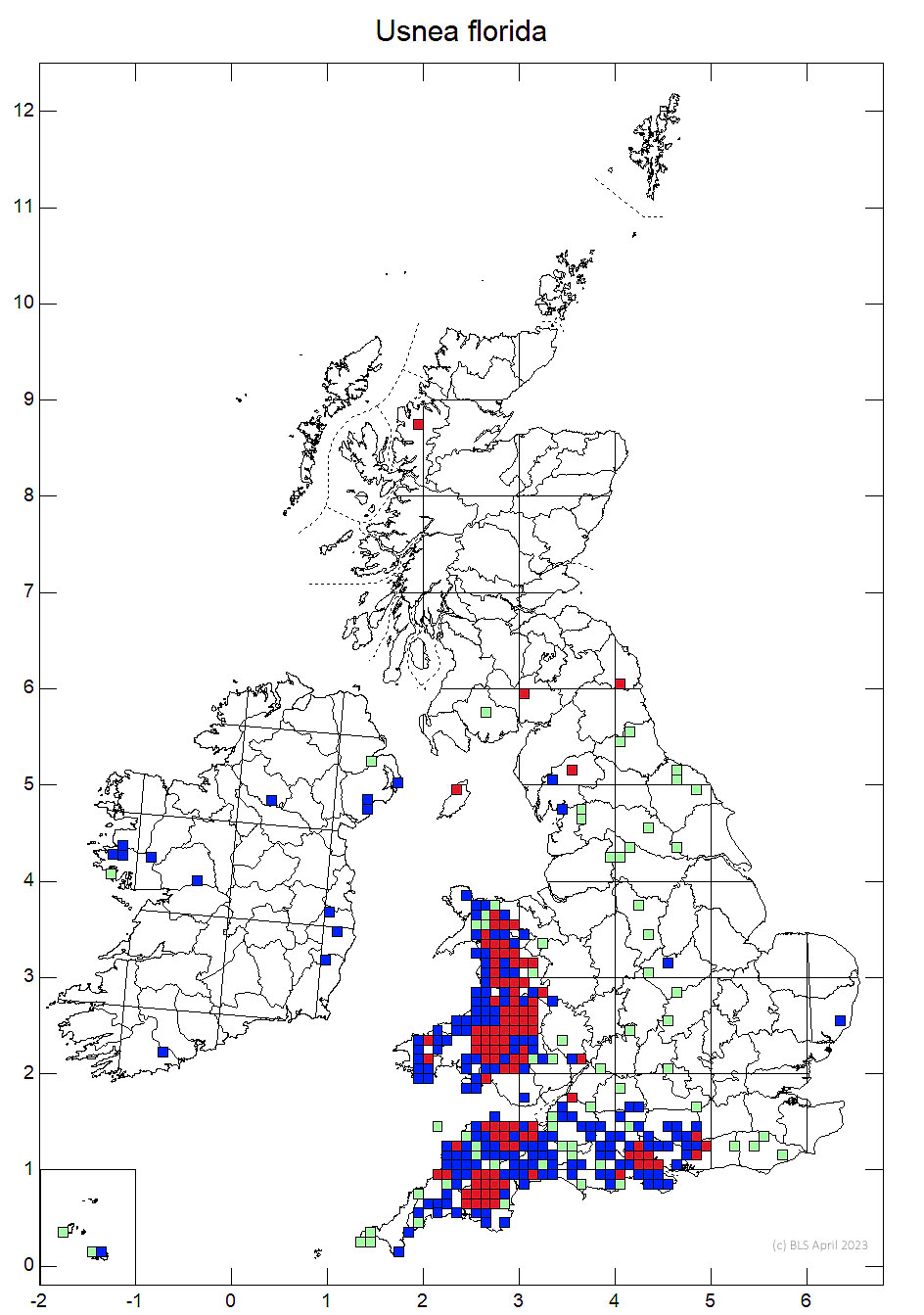Usnea barbata
Flowery lichen, witches beard
When well-developed this is one of the most conspicuous and beautiful of all lichens. It forms rounded, upright, yellow-green shrub-like colonies on the twigs and smaller branches of trees and shrubs and occasionally on the timber of fences and gates. Usually abundantly fertile, its fruits are flat circular discs (apothecia) up to a centimetre or more in diameter surrounded by a fringe of finger-like lobes resembling an image of the sun or a flower. The base of the lichen is brown to black and the stems and branches when examined with a x10 hand lens are covered in warts and lack any short fragile clusters of branches (isidia) or eruptions of tiny patches of flour-like granules (soredia).

Photo: Alan Hale
These latter structures are found in the rather similar Usnea subfloridana that can also have flower-like reproductive structure, though these seldom reach 0.5cm in diameter. Occasionally specimens will be encountered that cannot be confidently named and recent work on gene sequences suggests U. florida and U. subfloridana are very closely related. There are a number of other Usnea species that superficially resemble this species though none develop such large fruiting discs whilst remaining erect and shrub-like.
 |
 |
| U. florida - main stem with low warty bumps, but soredia and isidia completely absent | U. subfloridana - stem and branches carry small soralia, but the granules (soredia) produced by them soon give rise to clustters of short isidia |
Drawings: Alan Orange
Usnea species have been used medicinally for over a thousand years. Most species contain usnic acid amongst other substances which is recognised as a potent antibiotic and antifungal agent, effective against all gram-positive and tuberculosis bacterial species. It has been used to treat surface wounds when sterile gauze and modern antibiotics were unavailable. Native Americans employed it as a compress applied to severe battle wounds to prevent infection and gangrene. It is also said to be edible and to contain a high level of vitamin C. In modern American herbal medicine, Usnea is primarily used in lung and upper respiratory tract infections, and urinary tract infections. There are no human clinical trials to either support or refute either practice, although in vitro research does strongly support Usnea's antimicrobial properties.
It occurs on well lit twigs and small branches (very rarely on trunks) of a wide range of acid barked trees and shrubs such as hawthorn, birch, oak and larch and in areas subject to acid rain it can occur on almost any type of woody species. It also occurs on wood of dead standing trees and on chemically untreated or well-weathered sawn timber. Describing the sort of place it might be found is not easy. It is very sensitive to sulphur dioxide pollution and tended to be more frequent in sheltered but well lit sites such as open willow carr in valley bottoms yet it now seems equally at home on exposed hawthorns and rowans around the upland fringes. Its distribution can however be very patchy with one tree supporting a lot of colonies whilst on adjacent trees it may be absent. In woodland it may be frequent high in the canopy and only be revealed following gales or heavy snowfall when a search of the ground often reveals fine specimens dislodged from the canopy.
Wales holds almost half the British population of this species, being recorded from all vice-counties except Flintshire and with no recent records from Monmouthshire. It is reported from most 10km squares in mid and west Wales and declines rapidly in abundance as the English border is approached, probably as a result of atmospheric pollutants rather than climate or a lack of suitable substrate. In England it is frequent only in the south-west where a recent notable decline in its abundance has been reported. In Scotland it is confined to the extreme south-west whilst in Ireland it is a scarce species most frequently encountered in the far west. It is reported in the rest of the world from Macronesia, western and central Europe eastwards to Turkey and in Russia eastwards to the Caucasus, though only just extends north into southern Scandinavia and avoids the Mediterranean region in the south in a distribution that might be described as suboceanic. It is thought to be extinct in Denmark. It is reported from Africa, Asia and North and South America (Smith et al (2009)) though it finds no place in Lichens of North America (Brodo et al (2001)).
It is very sensitive to sulphur dioxide pollution and requiring an acidic substrate may also be sensitive to ammonia pollution. A decline has been noted in SW England possibly ascribed to rising ammonia levels. So far no great extension in range has been noted following the almost total elimination of sulphur dioxide as an atmospheric pollutant. Other Usnea species such as the also regularly fertile U. subfloridana have now recolonised parts of the English midlands. It is accorded Near Threatened status in Britain but is considered to be of Least Concern in Wales. It is a national BAP species and is listed on Sect 42 of the NERC Act in Wales.
Brodo, I.M., Sharnoff, S. D. & Sharnoff, S. (2001). Lichens of North America. Yale University Press, New Haven and London.
Smith, C.W. et al (eds.), (2009). The Lichens of Great Britain and Ireland. British Lichen Society, London.
- Log in to post comments

